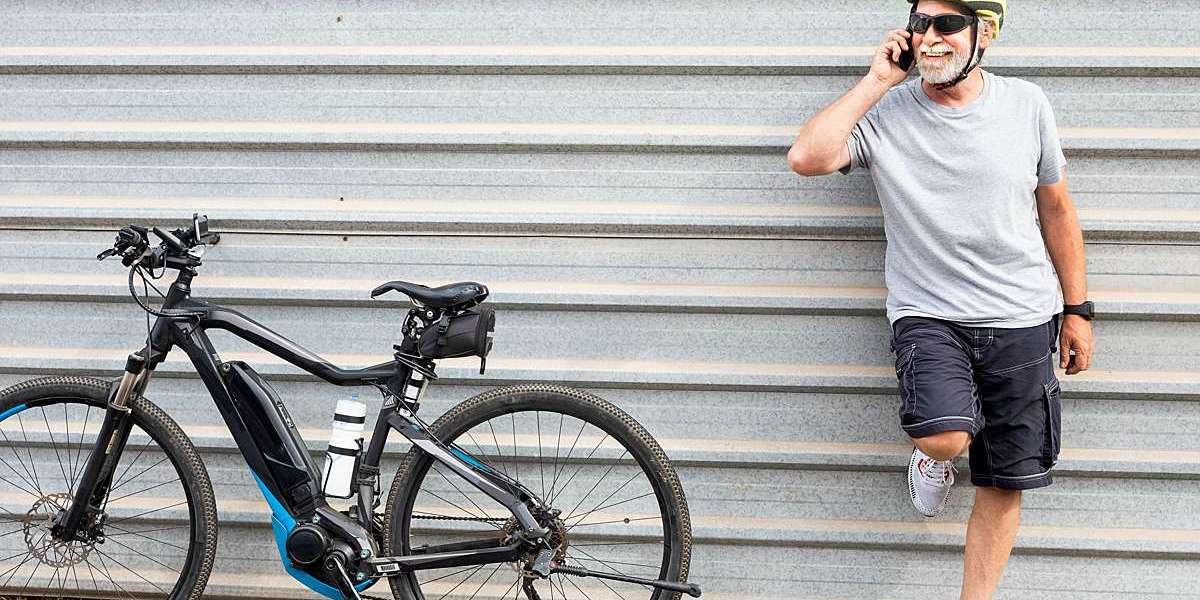After the long winter, getting outside and moving around is a great way to stay healthy and enjoy the warmer weather. But summer is also peak time for outdoor sports injuries. Here’s how ISO’s technical committee for sports and other leisure pursuits keeps you safe and active in the sun.
Cycling for life


Looking after our own and each other’s health and well-being has never been more important. Commuting remains an essential part of our everyday lives and offers us an efficient way to increase physical activity daily. Luckily, electrically power-assisted cycles, or EPACs, are on the rise – paving the way for us to do just that. Here’s everything you need to know about this technology and how ISO helps ensure that we pedal towards wellness in the safest way possible.
The world’s smartest cities recognize that cycling promotes simple and healthy lifestyles and sustainable commuting. The global market for this technology is projected to witness rapid growth due to its increasing consumer preference as an eco-friendly alternative for getting around. The technology is so popular that in Asia, the world’s largest e-bike market, there are currently two hundred million of them in use, followed by Europe and the Americas. The market is still comparatively small for the rest of the world, and yet, as more people become aware of its countless benefits, the adoption rates are set to increase over time.
But first, what exactly is an EPAC? It is a vehicle which has at least two wheels and is propelled by the muscular energy of the person on that vehicle, in particular by means of pedalling, with added assistance provided by an electric motor. Simply put, it is a bicycle with an electric motor, rechargeable batteries, and some gadgetry integrated into them for momentum. So when you’re tempted to ride, but your legs or knees don’t feel they are up to the challenge, don’t fret! As we age, we may have less capacity to exert more power, but an EPAC will still get us out there, making it easy to start exercising again.

“Brake” no sweat
Scared that your recreational ride will end in tears and sweat? No problem! When you ride, the motor is your buddy and will take you where you’re supposed to be. Once you start pedalling on an e-bike, a small motor engages giving you an extra boost. You have the freedom to control your speed with your feet, but with some assistance, you just feel more powerful, accelerating easily. Tough terrains along your route? Work that electric boost to your advantage. Is your destination too far away and you don’t want to endure the usual traffic? Pedal your way there without breaking a sweat. This will save you time and energy.
Cycling for leisure and recreation also fosters a sense of solidarity within local communities. It gives us freedom unlike any other mode of transportation. Freedom to roam around places and never worry about the gas. Freedom to navigate and pedal anywhere without having to sit in much traffic. Most importantly, freedom to have fun! Given the increasing interest in this technology, studies emphasize its potential to promote physical activity of a sufficient intensity to gain numerous health benefits.


Research suggests that e-biking contributes to one’s improvement of physical health and mental well-being.
Riding towards wellness
Cycling provides countless benefits to riders. Since bicycles are accessible and convenient, people will be more inclined to ride and exercise. Not only is it good physical exercise, simultaneously working the heart and the muscles, it is also a great way to regain a sense of well-being. PeopleForBikes, an industry consortium of bike manufacturers and riders in the United States, provides a series of studies and statistics which reflect the increasing awareness of the usage and benefits of e-bikes as well as their growing markets in different corners of the world.

Stefan Berggren, Senior Product Compliance Engineer at Trek Bicycle, a worldwide bicycle and cycling product manufacturer, states that, contrary to popular belief, this technology does not rob us of our human-powered way of life; in fact, it enhances it. “The rise of electrically power-assisted cycles opens up new doors of opportunities and gives people more freedom in terms of commuting. This revolution allows people to utilize bicycles for transportation or recreation,” he says.
Cycling on a regular basis also improves our immune system and stimulates the secretion of endorphins and dopamine in the brain, hormones that boost our morale and help maintain psychological health – no wonder everyone smiles after a good bike ride, despite the intense yet satisfying cardio workout!
Assisted cycling is also good for the muscles from head to toe. It develops the power of muscles of the lower limbs, refines and tones those of the legs and glutes. Also, cycling develops qualities of proper skill and balance. Furthermore, it promotes blood and lymphatic circulation by working the deep muscles and allows a better distribution of lean mass compared to fat mass.
Most importantly, getting on that bike reduces the risk of more serious and chronic illnesses, the likes of diabetes, cancer, cardiovascular disease, and even Alzheimer’s and Parkinson’s. Research suggests that e-biking contributes to one’s improvement of physical health and mental well-being. In essence, a cycle a day definitely improves the prognosis of cardiovascular and respiratory, neurological, oncological, metabolic and rheumatological diseases. And after all this effort cycling, you will definitely have a good night’s sleep, too.
Safe in the saddle
Cycling provides countless benefits to riders.

As cycling rose to popularity being a competitive, sports or leisure tool, trends reflect e-bikes as an emerging market towards sustainable transportation. Research from Portland State University suggests that e-bikes encourage new people to ride, get those who already ride to ride more often, and notes that people feel safer when riding e-bikes than standard bikes. The same study suggests that e-bikes are replacing car trips as well.
However, with higher levels of adoption, the rise of electrically power-assisted cycles also raises more safety concerns. With normal speeds topping out around 16 km/h to 30 km/h (depending on national regulations on maximum speed for which the electric motor gives assistance), are EPACs more prone to crashes and accidents than regular bicycles? A study published in the journal Transportation Research suggests that electrically power-assisted cycles do indeed carry a specific set of safety implications. In Europe alone, more than two thousand cyclists die every year in traffic accidents, mainly attributed to the technology’s high speed and growing prevalence, therefore increasing the risks for cycle-related incidents.
So, how exactly does ISO come into the picture? International Standards for bicycles have come a long way, with the first series on bicycle safety – the ISO 4210 series – being published way back in the 1980s. Philippe Legrand, Chair of subcommittee SC 1, Cycles and major sub-assemblies, the expert group that developed the standards under technical committee ISO/TC 149, Cycles, states that they are established keeping in mind all safety considerations for bicycles: “We want our riders to not just have a good experience, but more importantly a safe experience, and that comes down to ensuring a robust quality regime for our bicycles.” Legrand adds.
Developed in response to a demand throughout the world, these standards are designed to ensure the strength and durability of individual parts as well as of the bicycle as a whole. Ultimately, the aim is to ensure that bicycles manufactured in compliance with International Standards will be as safe for riders as practically possible.
Several decades on, these standards have stood the test of time by constantly evolving to meet the ever-changing needs of consumers, authorities, industry, and the shifting city landscapes. Today, ISO’s contribution to the development of cycling as an efficient mode of transport for sport, leisure and tourism is slowly extending to e-bikes with the development of a new technical specification, ISO/TS 4210-10, covering safety requirements for electrically power-assisted cycles.

The rise of electrically power-assisted cycles opens up new doors of opportunities and gives people more freedom in terms of commuting.
Brave new wheels
Adapting to change is what life and standardization are all about. For example, the world has changed significantly since the coronavirus outbreak in ways no one really expected. With the World Health Organization’s advice that we should stay at least two metres away from other people to minimize the spread of infection, public transportation or even carpooling, wherein direct contact with others cannot be avoided, may be deemed too risky for a period of time.
With all things considered, e-bikes seem to be an obvious and favourable choice of transportation as they are definitely easier to navigate and mean that you are riding alone. Weighing in on people’s perception of this mode of transportation during and after the pandemic, Berggren adds, “It’s definitely a wake-up call to some extent. The outbreak opened our eyes to things we somehow took for granted before, bringing a much-needed change in how we see this technology.” While most of us have had our fair share of staying at home to prevent the further spread of the virus, EPACs present us with an alternative way of going out to feel the breeze against our skin, get some sunshine and a shot of endorphins without expending too much effort.
The benefits of riding an electrically power-assisted cycle by far outweigh its risks. And where there are risks, ISO helps ensure these are managed and mitigated. Cycling gives us so many things – aside from better health and well-being, it reduces our stress and gives us more fun and freedom. We should not miss the chance to utilize such technology, especially when it also promises a better environment for all. It’s initiating this endeavour that takes confidence and determination. Now, pick a destination. One thing is for sure: regardless of where you want to go, electrically power-assisted cycles can take you there in fun and healthy ways no other vehicles can.
The benefits of riding an electrically power-assisted cycle by far outweigh its risks.
Wellness
Our well-being issue provides wellness tips, looks into the benefits of sport and e-bike standards, discusses medical spas and thalassotherapy and provides you with loads of insights in the booming medical tourism industry.
/en/2020/ISOfocus_141/ISOfocus_141.jpg/thumbnails/300)



